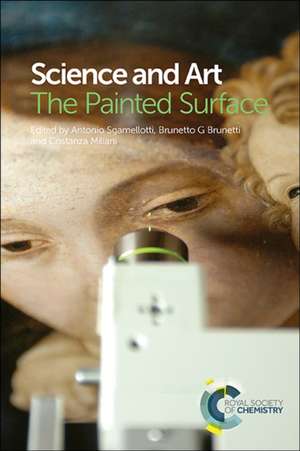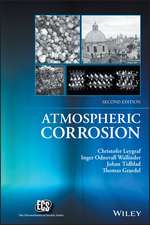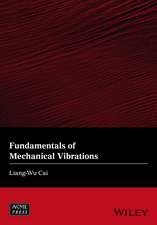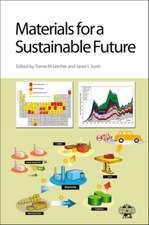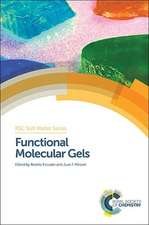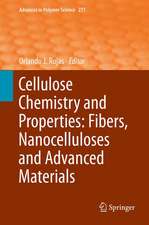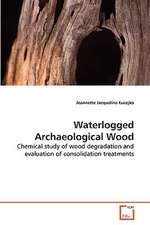Science and Art
Editat de Antonio Sgamellotti, Brunetto Giovanni Brunetti, Costanza Milianien Limba Engleză Hardback – 28 iul 2014
Preț: 393.97 lei
Nou
75.39€ • 80.61$ • 62.86£
Carte disponibilă
Livrare economică 27 martie-10 aprilie
Livrare express 13-19 martie pentru 58.83 lei
Specificații
ISBN-10: 1849738181
Pagini: 620
Ilustrații: illustrations
Dimensiuni: 165 x 239 x 42 mm
Greutate: 1.13 kg
Editura: Royal Society Of Chemistry
Notă biografică
Antonio Sgamellotti is an Academician of Lincei and Professor of Inorganic Chemistry at the University of Perugia. He is also Co-founder of the Center of Excellence SMAArt (Scientific Methodologies applied to Archaeology and Art). His research interests include advanced computations on chemistry, electronic and structural properties of molecules and inorganic materials, spectroscopic properties and characterization of archaeological and art-historical artefacts. Brunetto Giovanni Brunetti is a Full Professor of General and Inorganic Chemistry at the University of Perugia. He is also the coordinator for the European project CHARISMA (Cultural Heritage Advanced Research Infrastructures: Synergy for a Multidisciplinary Approach to Conservation/Restoration) and President of the Center of Excellence SMAArt (Scientific Methodologies applied to Archaeology and Art). Costanza Miliani is a researcher at the CNR Institute of Molecular Science and Technology (CNR-ISTM) and coordinator of the mobile laboratory MOLAB of the CHARISMA project. His research interests include non-invasive spectroscopic techniques for in-situ investigations on cultural heritage.
Textul de pe ultima copertă
Science and art are increasingly interconnected in the activities of the study and conservation of works of art. Science plays a key role in cultural heritage, from developing new analytical techniques for studying the art, to investigating new ways of preserving the materials for the future. For example, high resolution multispectral examination of paintings allows art historians to view underdrawings barely visible before, while the use of non-invasive and micro-sampling analytical techniques allow scientists to identify pigments and binders that help art conservators in their work. It also allows curators to understand more about how the artwork was originally painted.
Through a series of case studies written by scientists together with art historians, archaeologists and conservators, Science and Art: The Painted Surface demonstrates how the cooperation between science and humanities can lead to an increased understanding of the history of art and to better techniques in conservation. The examples used in the book cover paintings from ancient history, Renaissance, modern, and contemporary art, belonging to the artistic expressions of world regions from the Far East to America and Europe. Topics covered include the study of polychrome surfaces from pre-Columbian and medieval manuscripts, the revelation of hidden images below the surface of Van Gogh paintings and conservation of acrylic paints in contemporary art.
Presented in an easily readable form for a large audience, the book guides readers into new areas uncovered by the link between science and art. The book features contributions from leading institutions across the globe including the Metropolitan Museum of Art, New York; Art Institute of Chicago; Getty Conservation Institute; Opificio delle Pietre Dure, Firenze; National Gallery of London; Tate Britain; Warsaw Academy of Fine Art and the National Gallery of Denmark as well as a chapter covering the Thangka paintings by Nobel Prize winner Richard Ernst.
Descriere
Science and art are increasingly interconnected in the activities of the study and conservation of works of art. Science plays a key role in cultural heritage, from developing new analytical techniques for studying the art, to investigating new ways of preserving the materials for the future. For example, high resolution multispectral examination of paintings allows art historians to view underdrawings barely visible before, while the use of non-invasive and micro-sampling analytical techniques allow scientists to identify pigments and binders that help art conservators in their work.
It also allows curators to understand more about how the artwork was originally painted. Through a series of case studies written by scientists together with art historians, archaeologists and conservators, Science and Art: The Painted Surface demonstrates how the cooperation between science and humanities can lead to an increased understanding of the history of art and to better techniques in conservation. The examples used in the book cover paintings from ancient history, Renaissance, modern, and contemporary art, belonging to the artistic expressions of world regions from the Far East to America and Europe.
Topics covered include the study of polychrome surfaces from pre-Columbian and medieval manuscripts, the revelation of hidden images below the surface of Van Gogh paintings and conservation of acrylic paints in contemporary art. Presented in an easily readable form for a large audience, the book guides readers into new areas uncovered by the link between science and art. The book features contributions from leading institutions across the globe including the Metropolitan Museum of Art, New York; Art Institute of Chicago; Getty Conservation Institute; Opificio delle Pietre Dure, Firenze; National Gallery of London; Tate Britain; Warsaw Academy of Fine Art and the National Gallery of Denmark as well as a chapter covering the Thangka paintings by Nobel Prize winner Richard Ernst.
